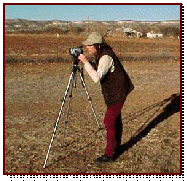
Prescriptive Design Vs. Participatory Design (Constructivist)
This is an easy one for me, partly because of my background, and partly from seeing it in action. I have always been a proponent of Action/Activity/Project based learning. Didn’t know it had a theoretical name such as “constructivism”, I only knew that it worked. But our task is to compare and contrast, so I will begin there.
I will compare to the ADDIE model, one I would have once found pertinent. It is much like strategic planning involving analysis, where you find your target audience and analyze their needs; then design around that research. Next development, putting all the elements of the plan (or curriculum) together to form a cohesive whole. Then implementation where you put it to work, or deliver the instruction. Lastly, test and evaluate. Check the results, see if it works.
This aspect of strategic planning does work. It is a tried and true method of accomplishment. I am sure it works in traditional education as well, and has worked for generations. After all, it is based on knowledge, research and analysis.
Then I learned about project based learning. Working with the previous director of Digital Media Arts in Sedona, I adopted his methodology of giving the students the tools, then setting them about a project, where they would use those tools. Having to use tools, balanced with theory and philosophy “brings home” the learning process. Working on a project that is “real-life,” vs. a textbook exercise forces the learner to see (and use) the learning in a “real” context. One that has “genuine” implications in work and life.
This was not new to me. I am trained in “Applied” anthropology. This is not working with “stones & bones,” nor “exotic” people. Instead it is working with contemporary people to solve modern problems. The idea is to use anthropological theory and training to bring about societal change. Taken a step farther, participatory action research is a component of “Action” anthropology. It has become a significant methodology for intervention, development and change within communities.
Not long ago, I encountered a group of humanities students in a program seated within Depth Psychology. I taught a course in Ecological Stewardship and another in Environmental Economics. Tough courses for students of mythology and the inner psyche. They resented me and the class. Yet, when they realized there was such a thing as “applied” psychology and even “applied” humanities, they began to see the value. Several of them are doing “real” projects and teaching workshops that embody the things they learned in that course. Well… I learned a lot from them as well.
Working in Digital Media, using the tools of technology, I find that projects become more pertinent than ever. I have taught many workshops in Digital Storytelling. Such stories are learning projects in themselves. Doing such a story helps a person in their understanding of self, improves their writing skills, teaches skills such as photo manipulation, video editing, sound production, and more. Students and participants work on an authentic project, taking home a DVD at the end of the day. And that can go farther. Stories from workshops have been used in the Verde River negotiations, one helped in getting Page Springs Road designated as a scenic byway, and in protection of endangered species. At the YA Nation, we use our stories to teach the youth about their elders and of cultural ways.
So, at the end of the day, I think that project embody all the components of the ADDIE model. Any project, digital or handmade incorporates analysis (audience, need, content analysis), design (goals and objectives, content, strategy, interface design), development (authoring, media creating, processing), implementation (promotion, distribution, reporting) and evaluation. What may be lacking in the ADDIE approach are methods to engage, to promote interest. Working with bona fide projects, enthusiasm is built in.







Judie, what a fabulous coincidence that Google notified me about this great post at just the moment -- almost to the second -- that I was sitting down to write to you! I finally launched the Place Keepers web site that was inspired by your Ecological Stewardship course and have placed my workbook project in the public domain. Check it out at http://www.placekeepers.org/place-keepers-workbook/. I hope all is well with you and your students!
ReplyDeleteWow... so glad I read the comments. As you can see, this is an educational technology course I am taking at Yavapai College. I am having fun with it but it leaves little room for other stuff.
ReplyDeleteMy work at Yavapai-Apache Nation is still fabulous, if scary at times. I am never sure if I will work there the next day, as I am not a tribal member.... or even Indian.
How exciting you found this....
Jung's "Synchronicities" have a way of guiding us to our higher consciousness if we are open to the experience and accepting of the energetic feel of what transpires in our lives, even when we aren't actually looking. So glad to reconnect to someone who is doing the "work" of sustainability. Taking action is the answer to so many questions we have about our lives.
ReplyDelete